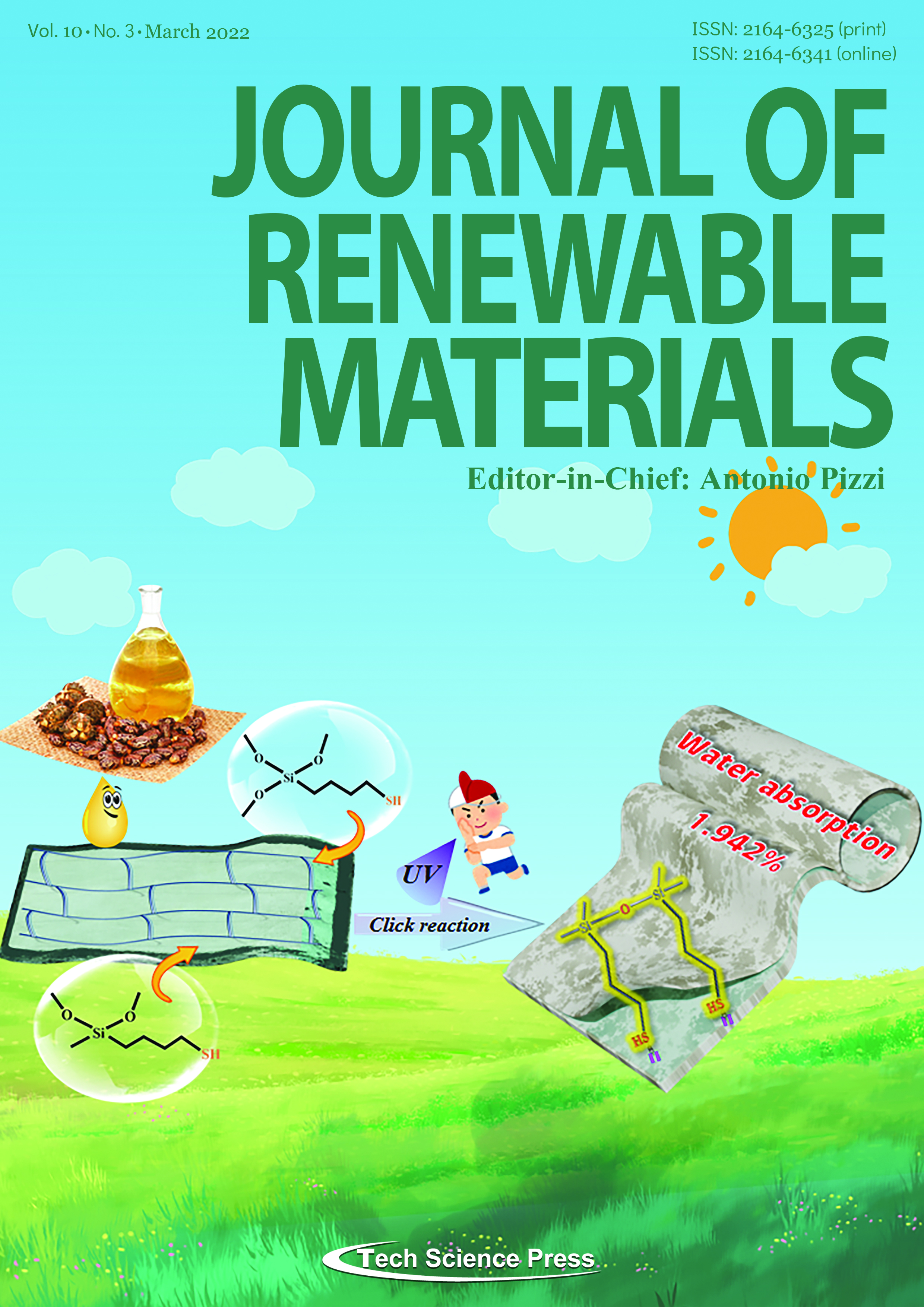Properties and Applications of Bamboo Fiber–A Current-State-of-the Art
Chen Chen1,2, Haitao Li1,2,*, Assima Dauletbek1,2, Feng Shen3, David Hui4, Milan Gaff5, Rodolfo Lorenzo6, Ileana Corbi7, Ottavia Corbi7, Mahmud Ashraf8
Journal of Renewable Materials, Vol.10, No.3, pp. 605-624, 2022, DOI:10.32604/jrm.2022.018685
- 28 September 2021
(This article belongs to the Special Issue: Bio-Composite Materials and Structures-2021)
Abstract Fibers are used in many forms in engineering applications–one of the most common being used as
reinforcement. Due to its renewable short natural growth cycle and abundance of bamboo resources,
bamboo fiber has attracted attention over other natural fibers. Bamboo fiber has a complex natural
structure but offers excellent mechanical properties, which are utilized in the textile, papermaking,
construction, and composites industry. However, bamboo fibers can easily absorb moisture and are prone
to corrosion limiting their use in engineering applications. Therefore, a better understanding of bamboo
fiber is particularly important. This paper reviews all existing More >
